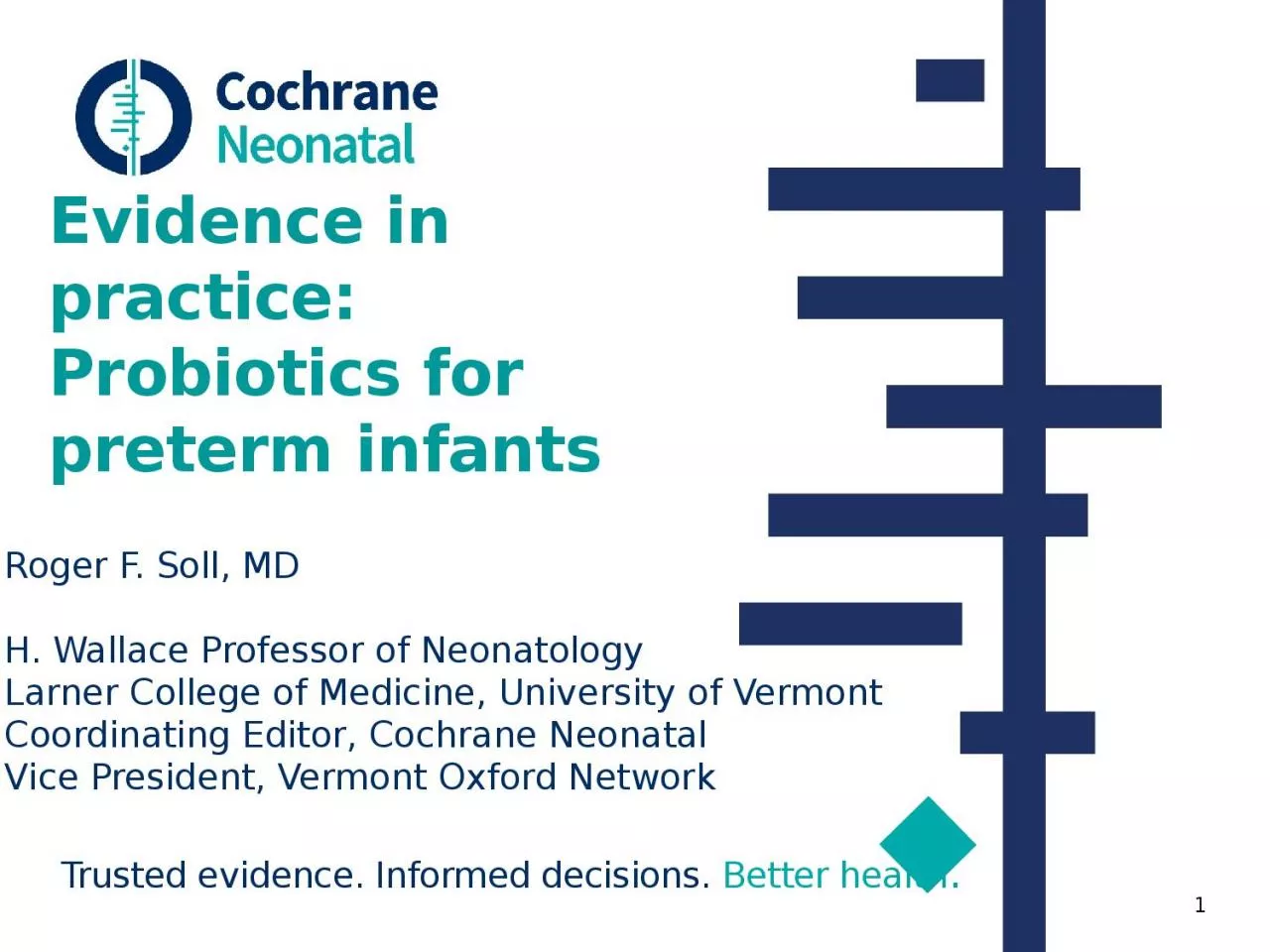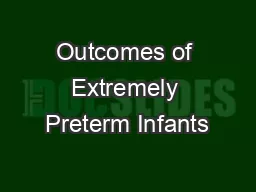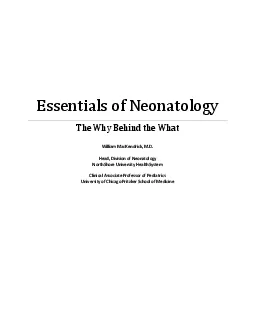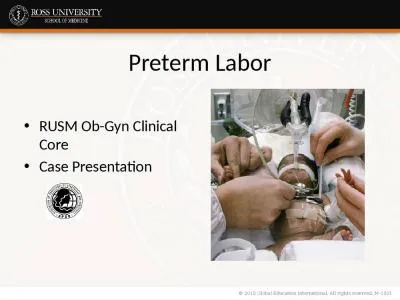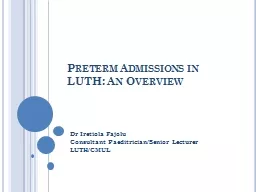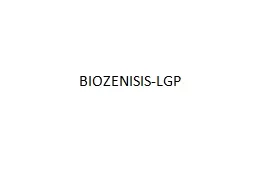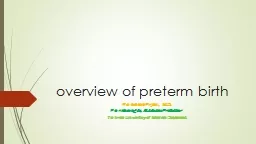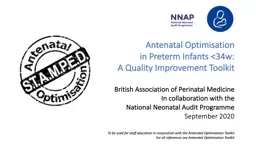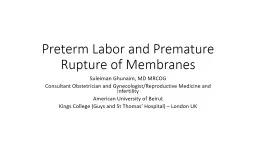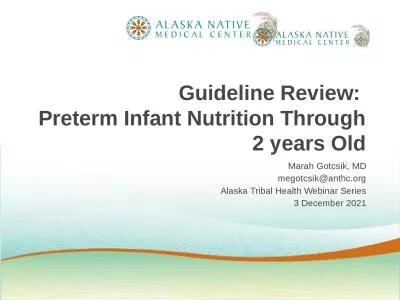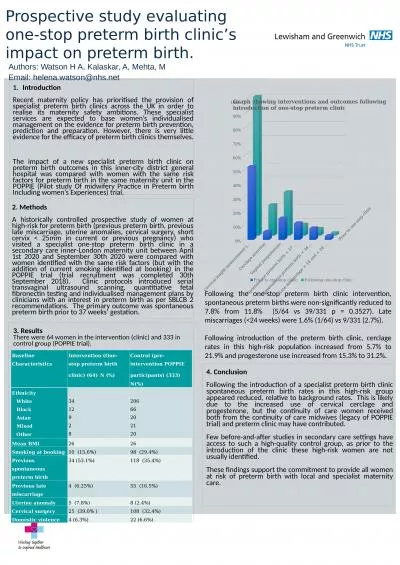PPT-Evidence in practice: Probiotics for preterm infants
Author : teresa | Published Date : 2022-06-18
Roger F Soll MD H Wallace Professor of Neonatology Larner College of Medicine University of Vermont Coordinating Editor Cochrane Neonatal Vice President Vermont
Presentation Embed Code
Download Presentation
Download Presentation The PPT/PDF document "Evidence in practice: Probiotics for pre..." is the property of its rightful owner. Permission is granted to download and print the materials on this website for personal, non-commercial use only, and to display it on your personal computer provided you do not modify the materials and that you retain all copyright notices contained in the materials. By downloading content from our website, you accept the terms of this agreement.
Evidence in practice: Probiotics for preterm infants: Transcript
Download Rules Of Document
"Evidence in practice: Probiotics for preterm infants"The content belongs to its owner. You may download and print it for personal use, without modification, and keep all copyright notices. By downloading, you agree to these terms.
Related Documents

